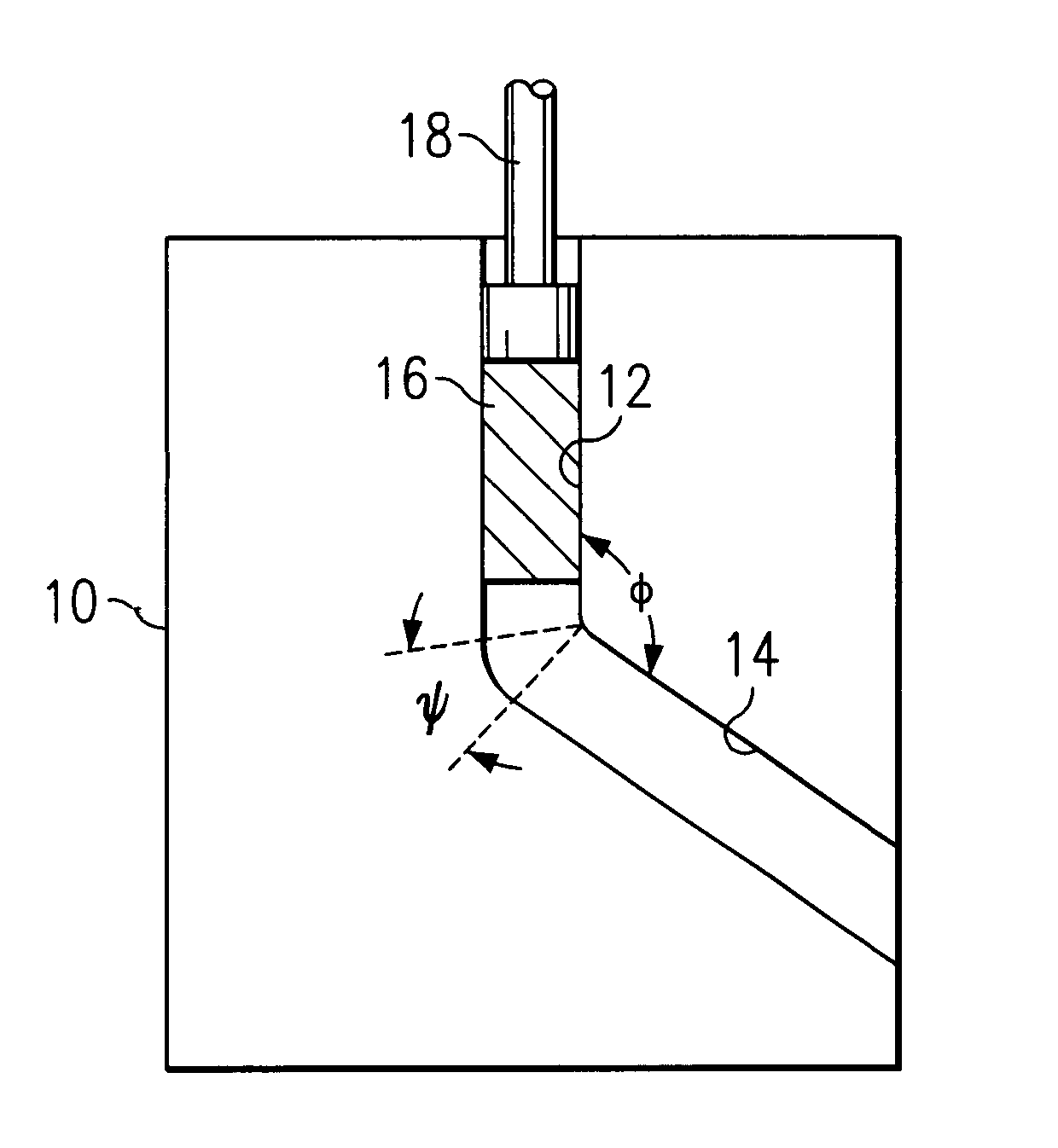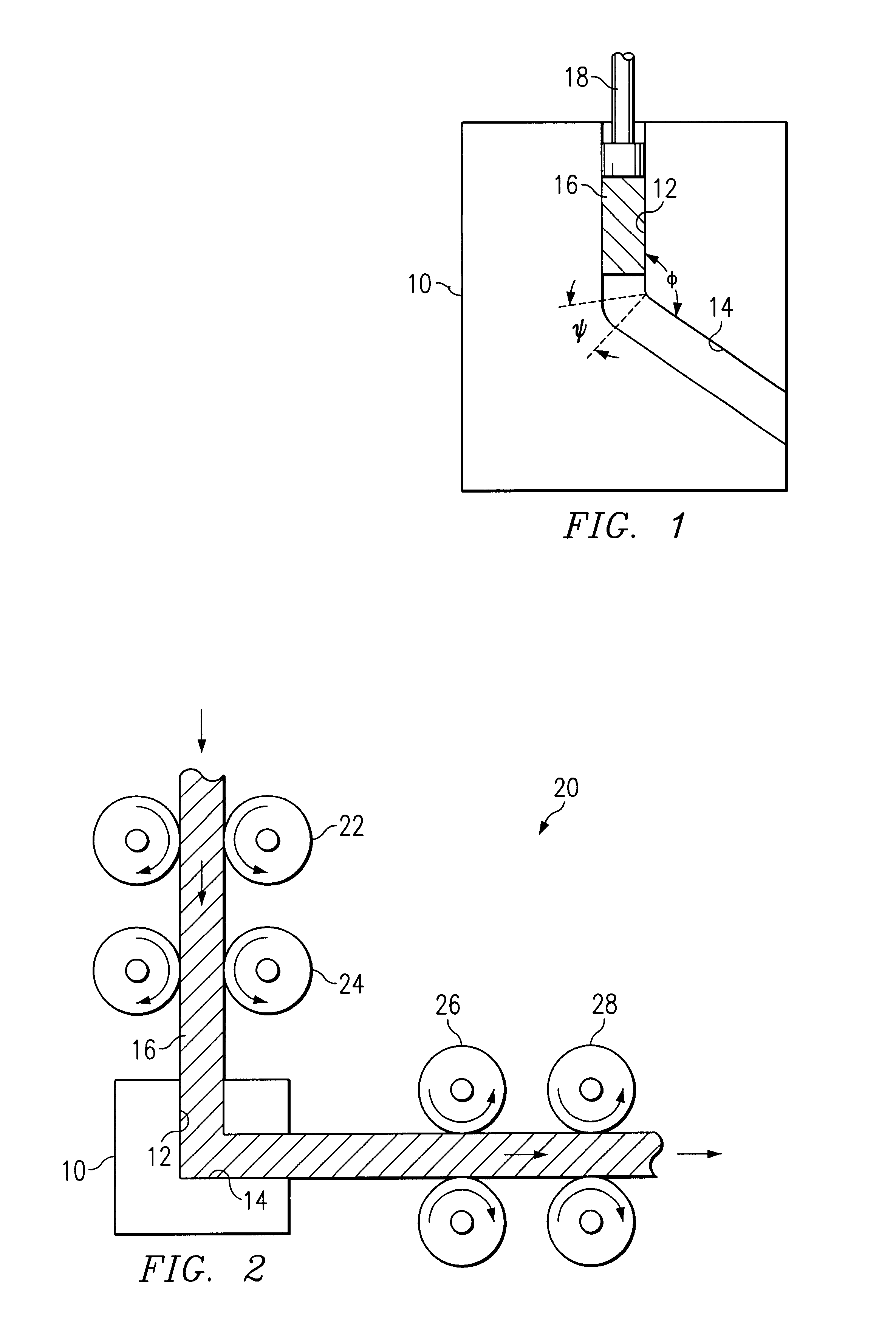Continuous severe plastic deformation process for metallic materials
a plastic deformation and continuous technology, applied in metal extrusion, extrusion dies, manufacturing tools, etc., can solve the problems of high density of steel, low tensile strength, and inability to adapt to stamping automobile body parts, so as to reduce the friction between the billets
- Summary
- Abstract
- Description
- Claims
- Application Information
AI Technical Summary
Benefits of technology
Problems solved by technology
Method used
Image
Examples
Embodiment Construction
[0021]With reference now to FIG. 2, there is illustrated an embodiment showing the principles and concepts of the invention. A Continuous Sever Plastic Deformation (CSPD) die 10 is constructed with an internal path having an angle (Φ) of about 90 degrees, although any other angle can be employed. The CSPD die 10 may be of a construction the same or similar to a conventional ECAE / P die shown in FIG. 1, although it is preferable to construct the CSPD die 10 with a channel diameter / length ratio in the range of about 1:1 to about 1:2. With such type of die ratios, there is much less friction between the billet 16 and the die 10. By using a CSPD die 10 having a 90 degree angle between the entry channel 12 and the exit channel 14, a maximum shear strain equivalent to a tensile strain of about 1.0 can be achieved. Importantly, the billet 16 need not be short, as was required when using a ram-type force to move the billet 16 through the die. Rather, the billet 16 is constrained and carried ...
PUM
| Property | Measurement | Unit |
|---|---|---|
| Length | aaaaa | aaaaa |
| Angle | aaaaa | aaaaa |
| Angle | aaaaa | aaaaa |
Abstract
Description
Claims
Application Information
 Login to View More
Login to View More - R&D
- Intellectual Property
- Life Sciences
- Materials
- Tech Scout
- Unparalleled Data Quality
- Higher Quality Content
- 60% Fewer Hallucinations
Browse by: Latest US Patents, China's latest patents, Technical Efficacy Thesaurus, Application Domain, Technology Topic, Popular Technical Reports.
© 2025 PatSnap. All rights reserved.Legal|Privacy policy|Modern Slavery Act Transparency Statement|Sitemap|About US| Contact US: help@patsnap.com



